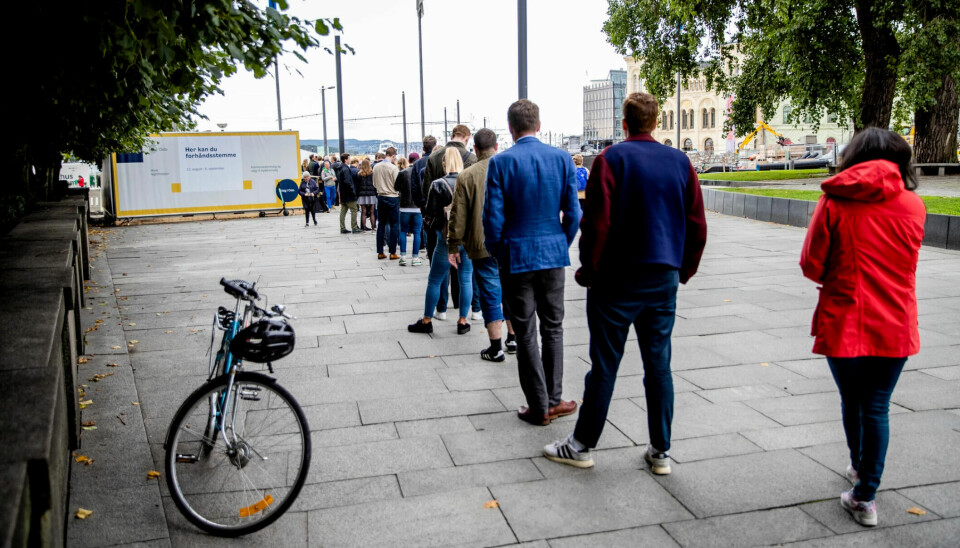
Fewer women on the local election lists
The proportion of women on the candidate lists for the upcoming municipal elections in Norway has decreased since the last election. Most of the top candidates on the lists are also men.
A total of 53,300 individuals are running in the upcoming municipal and county council elections in Norway this fall. According to Statistics Norway, 23,260 of these candidates are women.
This results in a female representation of 42 per cent, which is consistent with the proportion from the 2011 election. However, it still represents a decrease of 0.7 percentage points compared to the 2019 election.
These two parties have the most women
Among the parties represented in the Storting (the Norwegian Parliament), there are two parties that have more women than men on their candidate lists. The Socialist Left Party (SV) and the Red Party (Rødt) have female representations of 56 per cent and 51 per cent, respectively.
On the other end of the scale, the Conservative Party (Høyre) and the Progress Party (FrP) have female representations of 36 per cent and 27 per cent, respectively.
There has also been a negative trend regarding age. Compared to the 2019 election, there are fewer candidates under the age of 40.
40 per cent of all candidates are men between the ages of 40 and 75.
Even fewer women at the top
When it comes to top candidates, the proportion of women is even lower. Among the candidates placed first on the party lists, 33 per cent are women. Furthermore, none of the parties have over 50 per cent women among their top candidates.
SV has the highest female representation among their top candidates, with 47 per cent. At the other end, FrP has 23 per cent female top candidates on their lists.
Not all parties are running in every municipality. The Labour Party (AP) is running in the most municipalities, followed by the Centre Party (SP) and the Conservative Party (Høyre).
More women with higher education
When it comes to education level, there are significant differences among the parties. Female list candidates in particular have a high degree of higher education.
The Christian Democratic Party (KrF) has the highest proportion of candidates with higher education. 56.7 per cent of their female candidates have at least one year of higher education.
The lowest proportion is among male candidates for FrP. Only 18.7 per cent of this group have higher education.
Among male candidates, SV has the highest proportion with higher education at 40.8 per cent.
Completion of primary education
FrP stands out when it comes to the proportion of candidates who have completed primary education as their highest education level.
20.6 per cent of women and 19.3 per cent of men on FrP's lists have completed primary education as their highest level of education.
Overall, for both genders, the lowest proportion is among KrF candidates, followed by SP and the Liberal Party (Venstre).
Most candidates with a background from Germany
If we look at the country of origin of the candidates on the lists, European countries are at the top. In total, there are 208 candidates with a background from Germany, closely followed by Sweden with 203. Denmark and Iran are in third place with 154. These statistics represent raw numbers and not percentages.
There are also several countries on the list that traditionally have high immigration to Norway.
143 of the candidates running in this election have a background from Poland, while 139 have a background from Syria. 107 candidates have a background from Pakistan.
For all the mentioned countries, except for Sweden, the statistics show an increase in raw numbers compared to the 2019 election.
However, the category ‘other countries’ is at the top of Statistics Norway’s overview. 566 list candidates fall into this category.
Statistics Norway does not have data on the distribution of country of origin by political party.
———
Translated by Alette Bjordal Gjellesvik.
Read the Norwegian version of this article on forskning.no
------





































